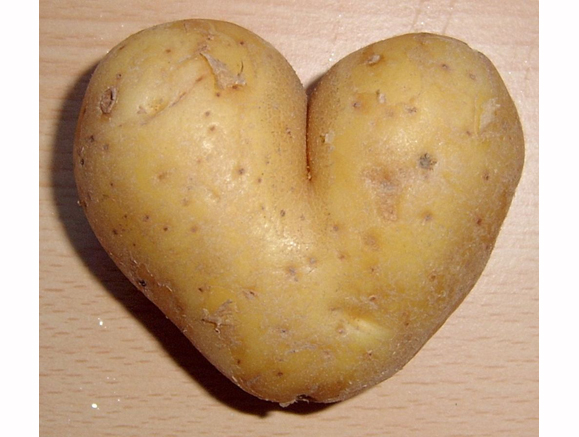Say it isn’t so! Sales and consumption of the potato have drastically fallen in America. Sales in the U.S. are down more than 25 percent since peaking in the mid 1990s. According to the Department of Agriculture’s statistics from 2012, the consumption of fresh potatoes – baked, chopped, or mashed – fell to 27 pounds per year, down 40 percent from 47 pounds in 1970.
A diet-conscious America is shunning the once proud potato, a staple of the American meal for decades. Even though potatoes remain one of the healthiest of vegetables – packed with more nutrients, vitamins, and minerals than most other veggies – a stigma of the potato as unhealthy has stalked the potato’s image for years. While most would view the potato with scorn given its disastrous consequences with famines, the potato, up until the mid-nineteenth century, was a staple product of Ireland. True, it was a subsistence crop that the Irish had survived on for centuries due in large part to unfair land policies of the British government, but its daily consumption made the Irish one of the healthiest people in the world. Thanks mainly to census and army records (lots of Irish served in the British Empire), it was discovered that the potato was perhaps one of the world’s first super foods, making many of the Irish taller, stronger, and healthier than the rest of Europe. Dublin dietician Paula Mee told The New York Times of the potato’s importance, saying, “In terms of overall nutrition and including vitamin C, the potato is head and shoulders above pasta and rice.”
Today an ever-changing and on-the-go American palate is slowly leaving the potato behind. The ever popular Atkins and South Beach diets spread fear across the country of carbs and its fatty intake. The long cooking and preparation time for potatoes is also forcing many to cook new and faster carbs like quinoa, couscous, and pasta. Time, it seems, is not on the potato’s side.
Even in Ireland, potato sales are down. The potato is still regarded as the number one carbohydrate in Ireland, but consumption has fallen by 25 percent since 2005. Bord Bia in Ireland estimates that potato consumption is estimated to drop to 40 percent over the next decade. Lorcan Bourke, Bord Bia analyst, stated, “That’s a crisis that will affect the livelihoods of growers and packers, it’s quite sobering.” Bord Bia is proposing a €1-million campaign over the next three years to turn the stigma of the potato around.
Back in the U.S., potatoes may be down but they aren’t out. According to the USDA, the raw potato crop was valued at $4 billion in 2012, with sales of $7.5 billion in chip and crisp sales in 2013. Chris Wada, marketing director of Wada Farms, stated his desire to “bring the sexy back” to the potato. Only time will tell if the potato will ever get “sexy” again, but for now we should all just enjoy its nutritional goodness.
US Potato Consumption Falls


Leave a Reply